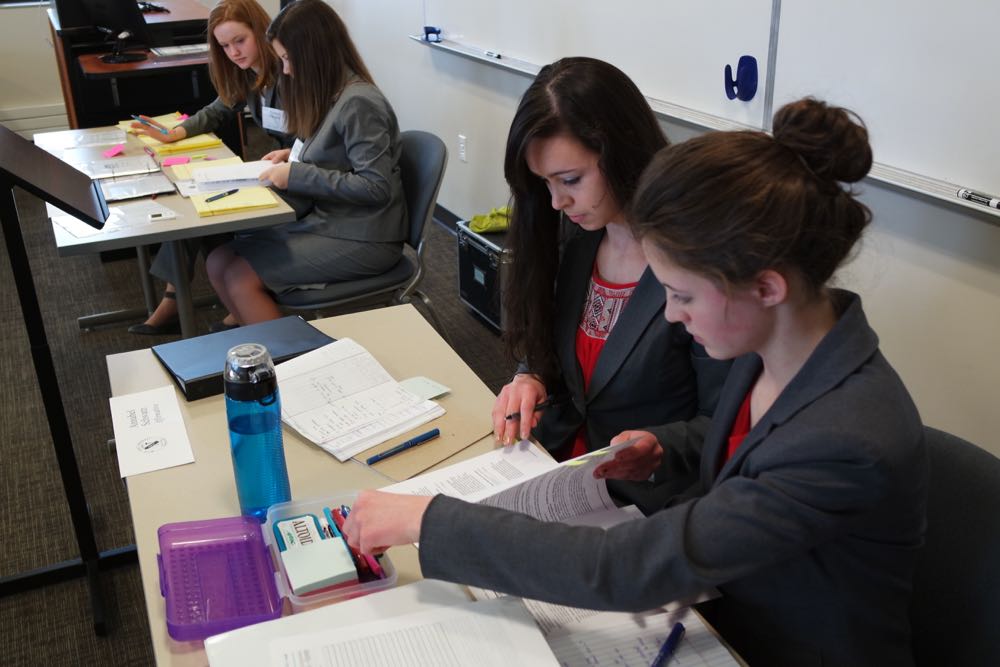Debate is an essential part of academic life. While it may be an adversarial activity, it does provide numerous positive benefits to students. Debates help in disciplining and increases opportunities for speaking and listening in the classroom. Academic debates develop educational skills of the participant. Many academic debates use the Lincoln Douglas format. There are several different formats of academic debates and they must be chosen based on the needs of the classroom or any tournament. The basic principle is both sides must have equal amount of time for speaking and cross-examination in total.
There are various major debate organizations that promote debate competitions between schools. Competitive debates provide students with the chance to meet debaters from around the world and speak in exciting new venues. This gives students the exposure they require early in their life. Another purpose behind such competitions is to build the student’s confidence level and help them overcome stage fear by letting them speak their heart out.
Now, let’s look at the different formats by Podium School.
The Formats
Lincoln-Douglas Format
Among the different formats of academic debates the Lincoln-Douglas format is for questions of a deep moral or philosophical nature. It is a one-on-one debate, which is open style and is frequently used for academic purposes. The debate was named after the famous series of debates between two famous U.S. Senate candidates; Abraham Lincoln and Stephen Douglas.

In this format of debate, the participants are to agree on time limits and topics ahead of time. It is one of the most structured patterns and allows people to bring in their rebuttals and perceptions openly. Therefore, many high school and college debaters follow this format. The Lincoln-Douglas debate format allows a student to win or lose based solely on an individual’s argument rather than relying on a partner or group.
A Lincoln-Douglas debate is usually around 40 to 45 minutes. At this instance, the speaker makes the case, later, a short rebuttal session is held, and the debate ends with the final rebuttal, during each stage of the process, it includes time for transitions and claims to be made. There’s an abbreviated version of this debate format, which runs for about 15 minutes.
Cross-Examination Format

In cross-examination format two teams get involved with two participants in each team, it is mainly defined as a cross-examination period between the speeches. In this format, the opponent debaters ask different questions to clarify if they find any point confusing or to clear some doubt they may have.
Each constructive speech follows a cross-examination period. Lengths of speeches and cross-examination sessions vary. Some formats have one constructive speech for each side and others have one rebuttal speech for each side. To answer the questions effectively, both the teams use strong evidence and facts. Moreover, this type of debate provides a chance to communicate with the opposing team. This speech is a bit longer and takes around 60-70 minutes.
Podium School provides one to one class for debates too. However, please visit our website to get more info on the same.
Inner Circle-Outer Circle Debate Format

In this format the teacher arranges the students into two different groups with equal number of members for each, belonging to opposing sides. Each group can listen to the other group discuss the issue at hand and get to conclusions, as well as formulate conclusions of their own. Let’s take Team 1 and Team 2.
Team 1 is made to sit in a circle facing away from the center and team 1 is made to sit in a circle around Team 1 facing towards the center and Team 1, now the teacher reads aloud the topic to be discussed. First, it would be Team 1’s chance to discuss the topic amongst them. the time given is 15-20 minutes. During this time nobody can speak, everyone must have their attentions trained on the inner circle members. However, the outer Team members create a list of arguments made by each inner circle member and they also prepare a list of arguments from their side.
The teams switch roles after 15-20 minutes and the process is repeated. After the second Team has had their discussions all the students share their observations. These notes can later be used in a follow up classroom discussion or for writing an assignment.
Tag of debate Debate Format

In a tag team debate under the different formats of academic debates the teacher divides the students into two different Teams of 5 members each. Each member gets a chance to participate in the debate. Each team has about 3-5 minutes to present their point of view on the topic at hand.
The teacher is the one who announces the topic to everyone in class after assigning teams. Now, one speaker from each group can stand and talk for a minute and present their argument on the topic. Once that minute is up, they can tag another member from their group to show some light on the topic. They can pick up where the last speaker left. A team member eager to present an important point can raise their hand to be tagged by the present speaker, however, a member cannot be tagged more than once. This way all the members in a group get a chance to speak and share their mind on the topic.
After both teams have presented, students vote on which team made the best argument.
Debate writing
Debate writing too is an essential part of academic life. It is usually written in a formal and direct tone, it is however essential to know the type of debate you are supposed to write. Debate writing helps students improve their writing, analytical, and critical thinking skills. The writing protocols of a debate include understanding the provided instructions, choosing the right topic, and considering the target audience.
Parting words
We hope that this article “The different formats of academic debates” would help both students and teachers to conduct fresh positive debates. Additionally, we also hope students would find this article interesting enough to join debate teams at their schools. Additionally, parents would also encourage their kids to join such clubs. The best way to get into the groove of debate is to watch a few videos online and take a few classes if necessary.
Share with your friends






